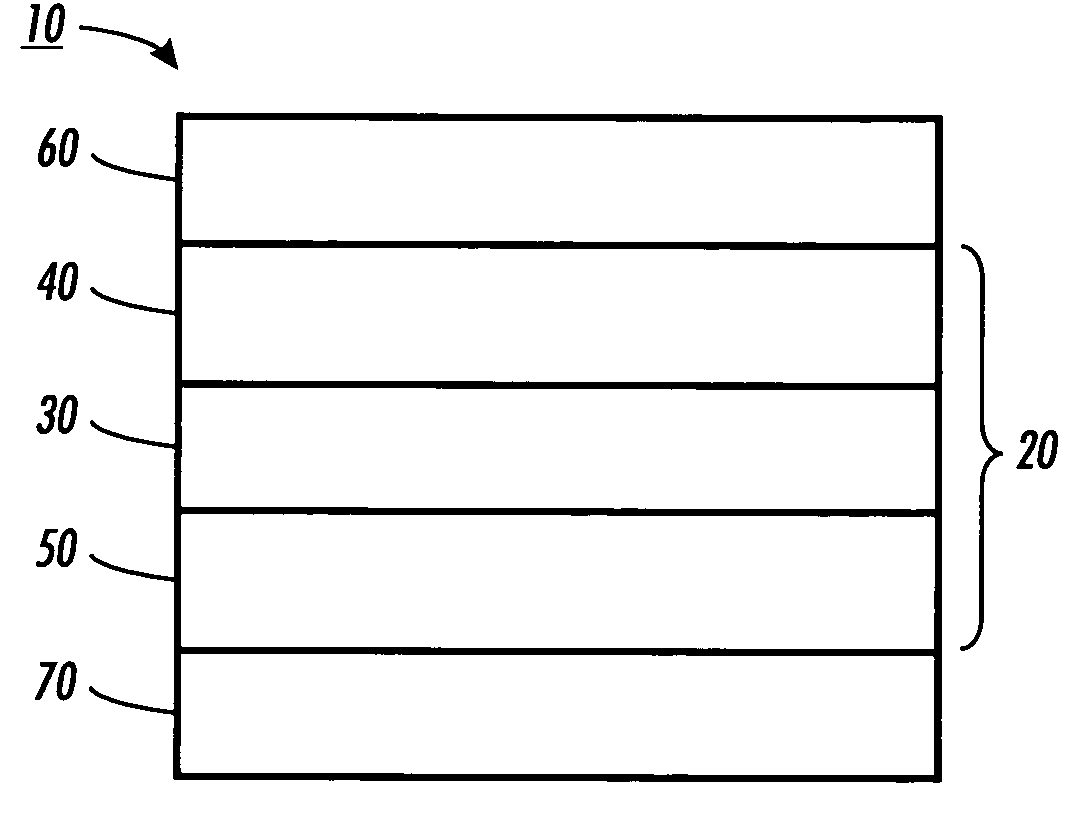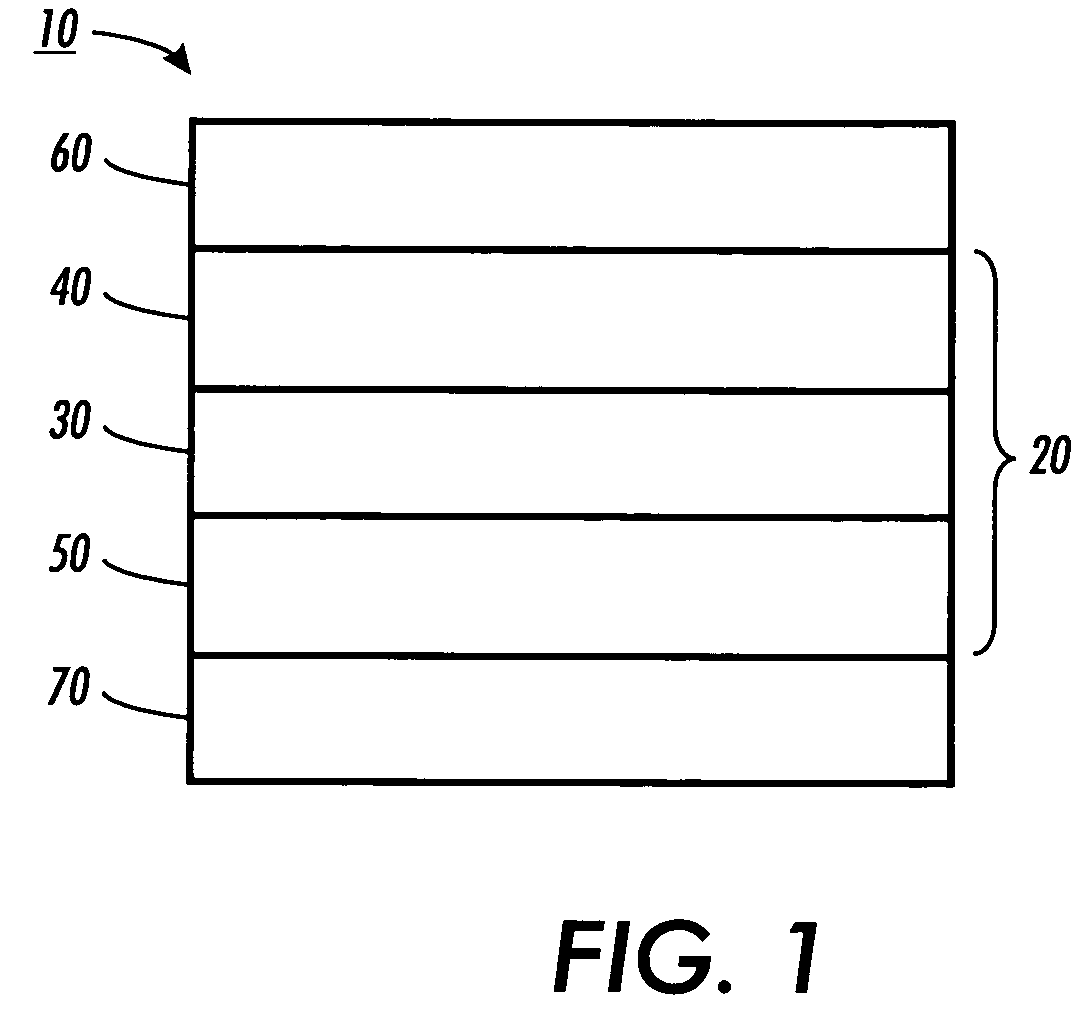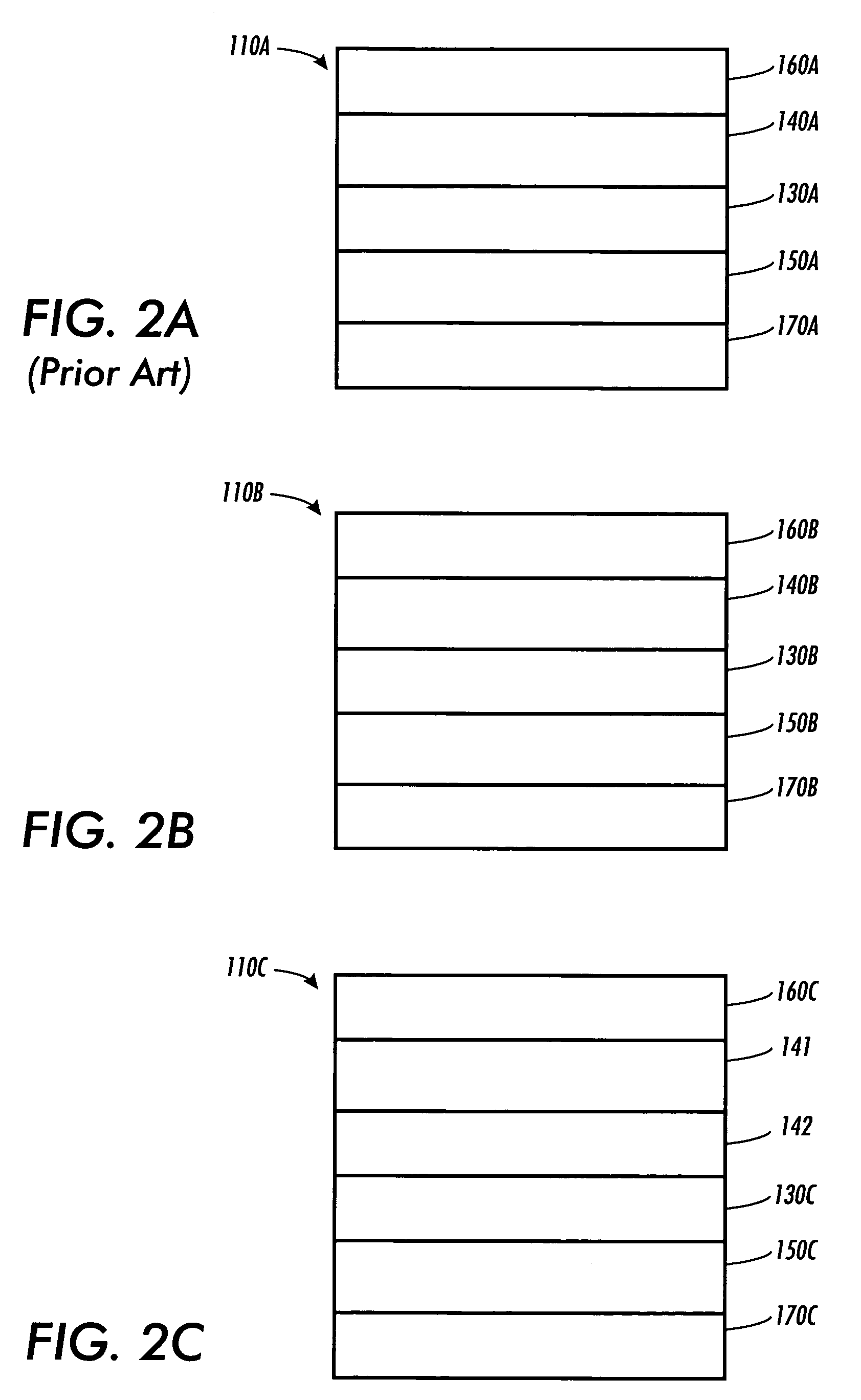Organic light emitting devices
a light-emitting device and organic technology, applied in the direction of discharge tube luminescnet screen, other domestic articles, natural mineral layered products, etc., can solve the problems of unstable efficiency and instability of single-mixed-layer organic light-emitting devices, the operation life of organic light-emitting devices described above is relatively short, and the efficiency of known devices is generally less than conventional devices, etc., to achieve the effect of minimizing power consumption, increasing power conversion efficiency, and improving efficiency
- Summary
- Abstract
- Description
- Claims
- Application Information
AI Technical Summary
Benefits of technology
Problems solved by technology
Method used
Image
Examples
example i
Synthesis of Azole Compounds of Formula II
[0096]In an illustrative example, an azole compound such as those of Formula (II) can be synthesized as follows:
[0097]A 1,10-phenanthroline-5,6-dione was heated at from about 50° C. to about 200° C., more preferably at from 80 to about 150° C., with from about 1 to about 5 equivalents of a suitable aryl aldehyde compound, such as benzaldehyde, 2-naphthaldehyde, 9-anthraldehyde and the like, in the presence of from about 10 to 20 equivalents of ammonium acetate in glacial acetic acid for a suitable time, for instance, about 5 hours. After cooling, the mixture was neutralized with a suitable base such as aqueous ammonia and the precipitate is collected by filtration to give an intermediate compound of 2-(9-aryl)imidazo[4,5-f]-[1,10]phenanthroline. This intermediate compound was then added to, from about 1 to 4 equivalents of a suitable base such as sodium hydride, from about 1 to 5 equivalents of a methylating agents such as iodomethane and su...
example ii
Fabrication of Organic EL Devices of the Invention:
[0101]Device A: A 500 Å indium tin oxide (ITO) anode coated glass substrate was selected, the thickness of the glass substrate being about 1 millimeter. The glass was cleaned with a commercial detergent, rinsed with deionized water and dried in a vacuum oven at 60° C. for 1 hour. Immediately before use, the glass was treated with UV ozone for about 0.5 hours.
[0102]The ITO anode coated on the glass substrate was then placed in a vacuum deposition chamber and a hole injection and transporting zone was applied. The zone deposition rate and thickness were controlled by an Inficon Model IC / 5 controller. Under a pressure of about 5×10−6 Torr, a 20 nanometers thick buffer was deposited on the ITO glass substrate through the evaporation of N,N′-1-naphthyl-N,N′-diphenyl-1,1′-biphenyl-4,4′-diamine at a rate of 0.6 nanometer / second from a tantalum boat.
[0103]Onto the hole injection and transporting zone was deposited a mixed charge transport l...
PUM
| Property | Measurement | Unit |
|---|---|---|
| excitation voltages | aaaaa | aaaaa |
| thickness | aaaaa | aaaaa |
| thickness | aaaaa | aaaaa |
Abstract
Description
Claims
Application Information
 Login to View More
Login to View More - R&D
- Intellectual Property
- Life Sciences
- Materials
- Tech Scout
- Unparalleled Data Quality
- Higher Quality Content
- 60% Fewer Hallucinations
Browse by: Latest US Patents, China's latest patents, Technical Efficacy Thesaurus, Application Domain, Technology Topic, Popular Technical Reports.
© 2025 PatSnap. All rights reserved.Legal|Privacy policy|Modern Slavery Act Transparency Statement|Sitemap|About US| Contact US: help@patsnap.com



